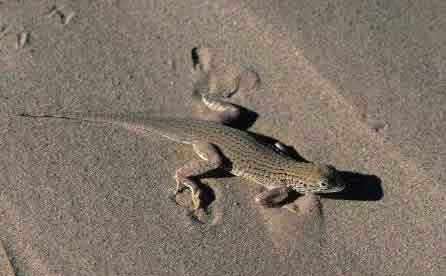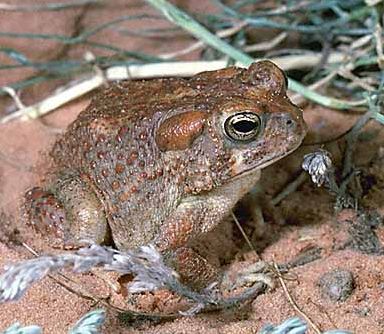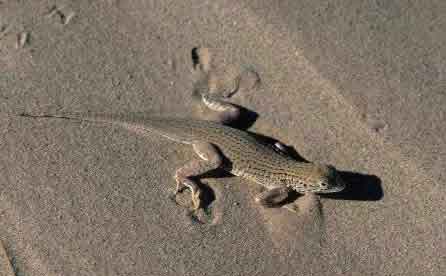Center for Biological Diversity is suing USFWS to get protections for these southwestern U.S. herps.
The Center for Biological Diversity announced its intent to sue the U.S. Fish and Wildlife Service in an effort to get endangered species protections for two amphibians, four lizards and a turtle that reside in the southwestern United States. The center previously petitioned the USFWS in 2012, seeking protections for the Arizona toad, Arizona night lizard, Bezy’s night lizard, Cascade Caverns salamander, reticulate collared lizard, Rio Grande cooter, and Yuman Desert fringe-toed lizard, due to habitat loss, cattle grazing, development, off-road vehicles and other factors.

Photo by Jim Rorabaugh/USFWS
The Yuman Desert fringe-toed lizard can be found only in certain desert areas of Arizona.
The wildlife service failed to review or act on the petition as required by law, despite support for the petition from several prominent herpetologists, including E.O. Wilson, Thomas Lovejoy and Michael Lannoo, and a letter signed by more than 200 scientists urging the wildlife service to review the status of these animals. The USFWS is required by law to determine, within 90 days if protections might be warranted after receiving a petition. According to the center, the 90 day window gives the wildlife service ample time to determine if there is enough information in the petition to warrant further consideration.
The Yuman Desert fringe-toed lizard (Uma rufopunctata) can be found only in certain desert areas of Arizona. They are found in sand areas with sparse vegetation and have a fringe of scales on their toes to help them navigate across loose sand without sinking. They are well suited for a sand life, with overlapping eyelids, earflaps and nostrils that are valve like to help protect them from blowing sand. The center says that the species is under threat from development and off-road vehicles.
Want to Learn More?
USFWS To Develop Recovery Plan For The California Tiger Salamander
Endangered Species Act Protections Sought For 53 Reptile And Amphibian Species In 45 States
The Cascade Caverns salamander (Eurycea latitans) are native to cave springs in Kendall County, Texas and feature external gills and recessed eyes. These salamanders are nearly translucent and spend the majority of their lives in the cave springs in near darkness. They are threatened by urban runoff that includes pesticides and herbicides as well as fertilizers and household solvents that find they way into the springs in which they live.
Despite its name, the Arizona toad (Anaxyrus microscaphus) can be found in New Mexico, Nevada, and Utah, in addition to Arizona. The toad lives in shallow flowing waters that have been disrupted by altered waterways that have reduced the flow of these waters. The Arizona toad is threatened by habitat loss as well as hybridization with the Woodhouse toad, which favors the still waters created by the manipulated waterways.

Photo by National Park Service
The Arizona toad (Anaxyrus microscaphus) can be found in New Mexico, Nevada, and Utah, in addition to Arizona.
The Rio Grande cooter (Pseudemys gorzugi) is native to Texas and New Mexico. It can be found in the Pecos-lower Rio Grande basin into Mexico and lives in deep, clear stream pools. They haven't been found in Texas in recent years and may be struggling with habitat loss or degradation or over collection.
The Texas native reticulate collared lizard (Crotaphytus reticulatus) is threatened by nonnative grasses that are planted for cattle grazing. These lizards are also threatened by habitat loss and is listed as threatened in the state of Texas.
Populations of the Arizona night lizard (Xantusia arizonae) and Bezy’s night lizard (Xantusia bezyi) have very small and limited native ranges and as such are vulnerable to any threat. One of their biggest threats is over collection for the pet trade, the center said. The Arizona night lizard is found only in Yavapai County, Ariz. while the Bezy's night lizard is native to just nine localities in the state.


